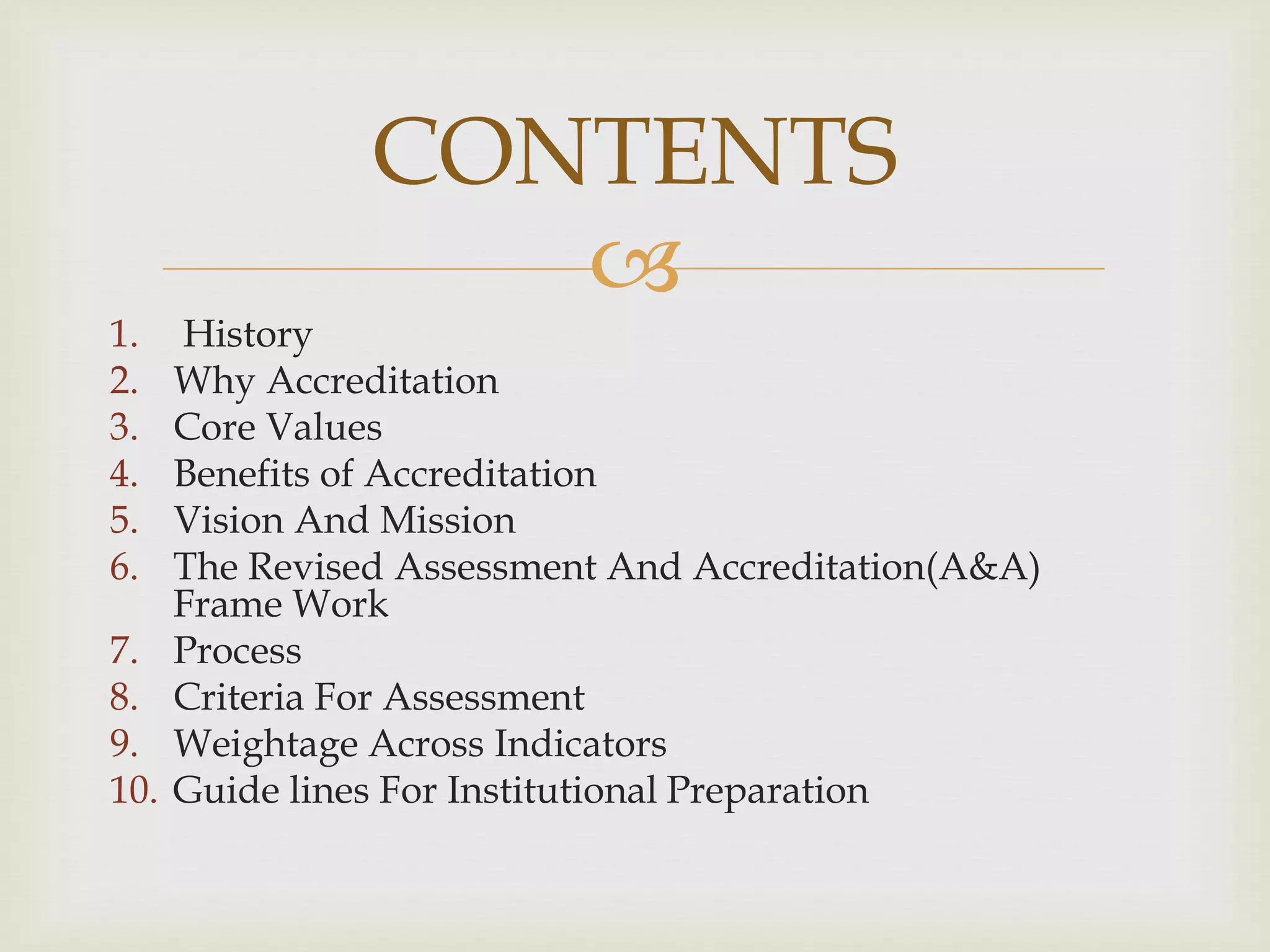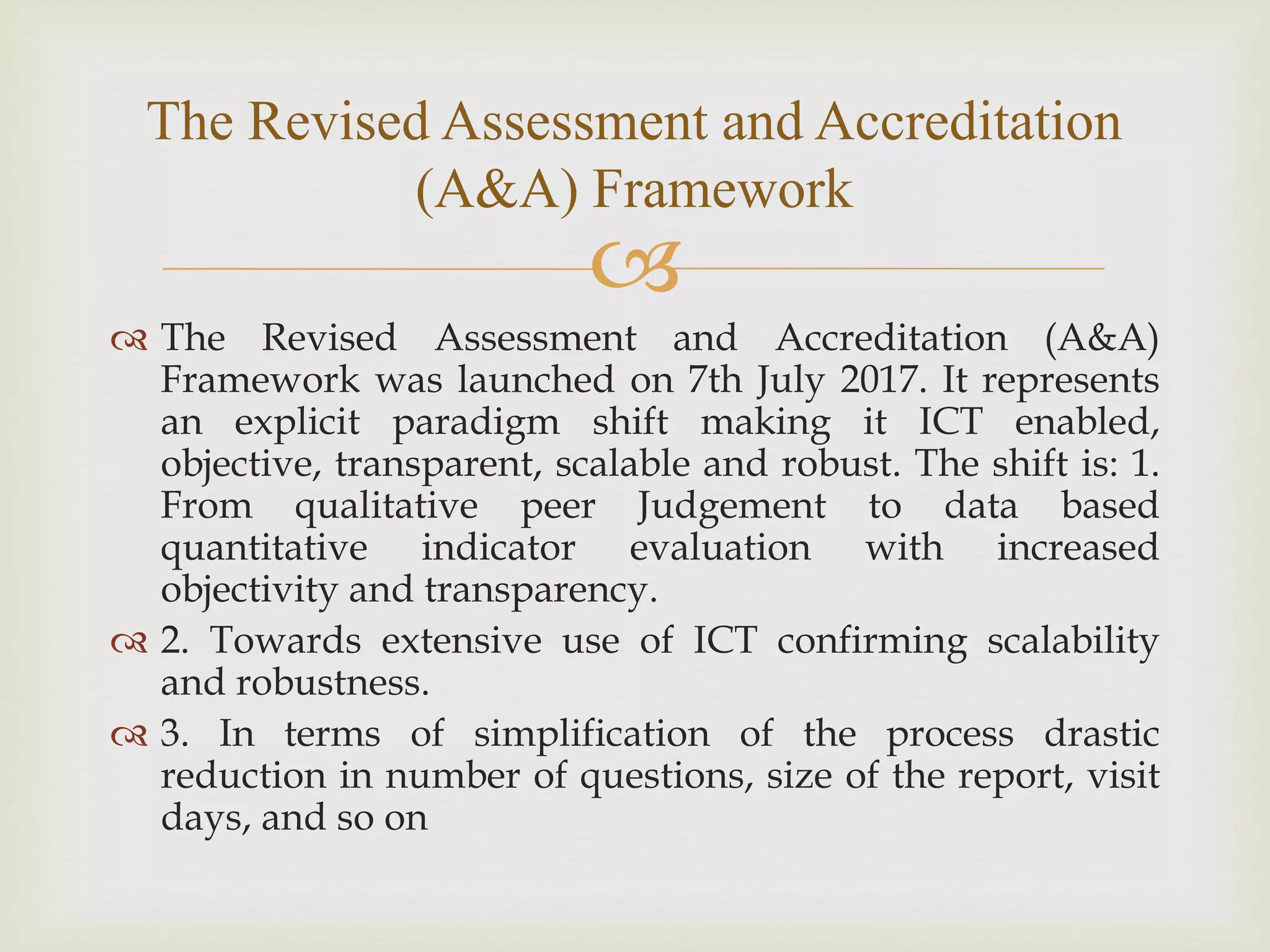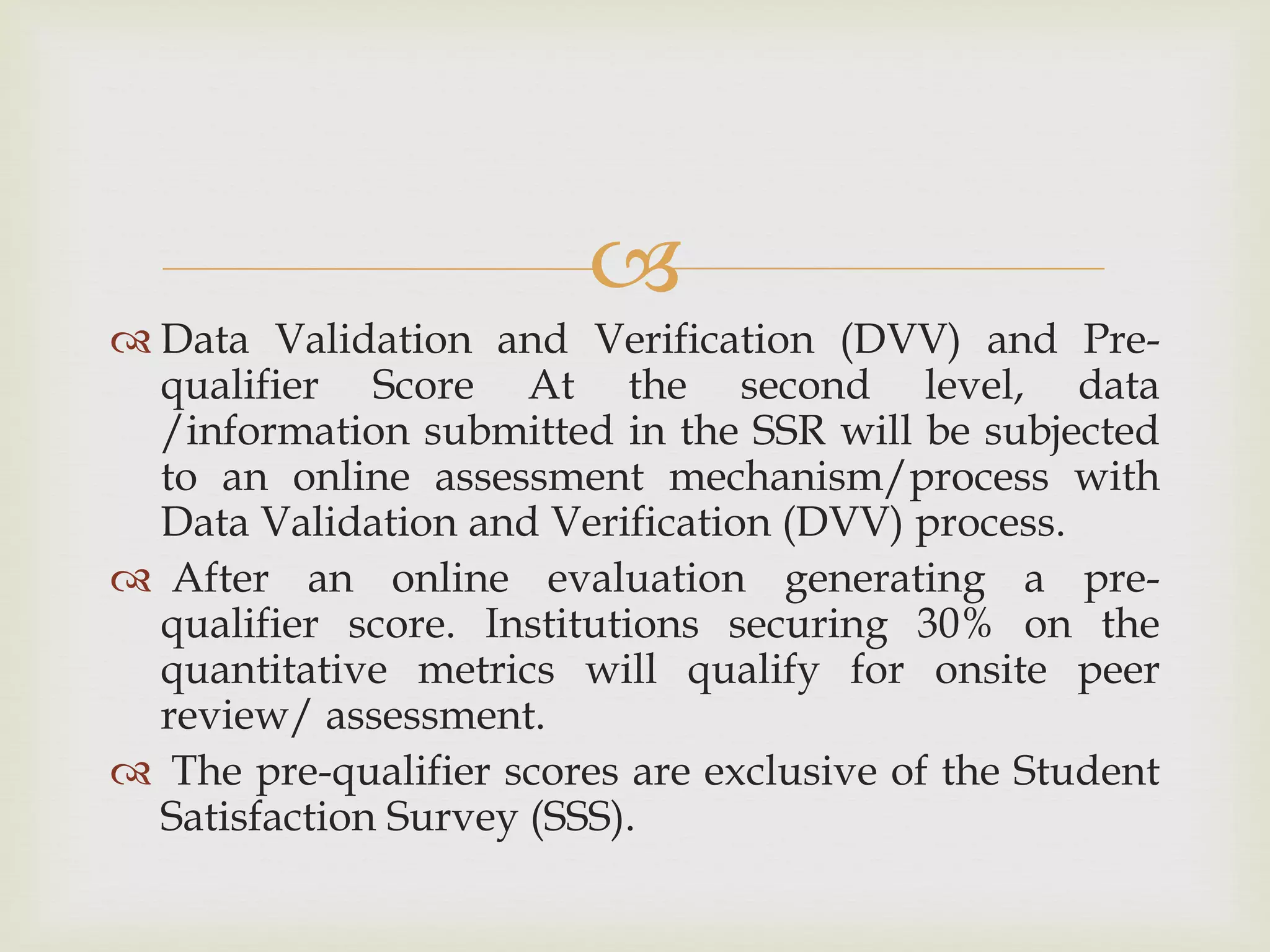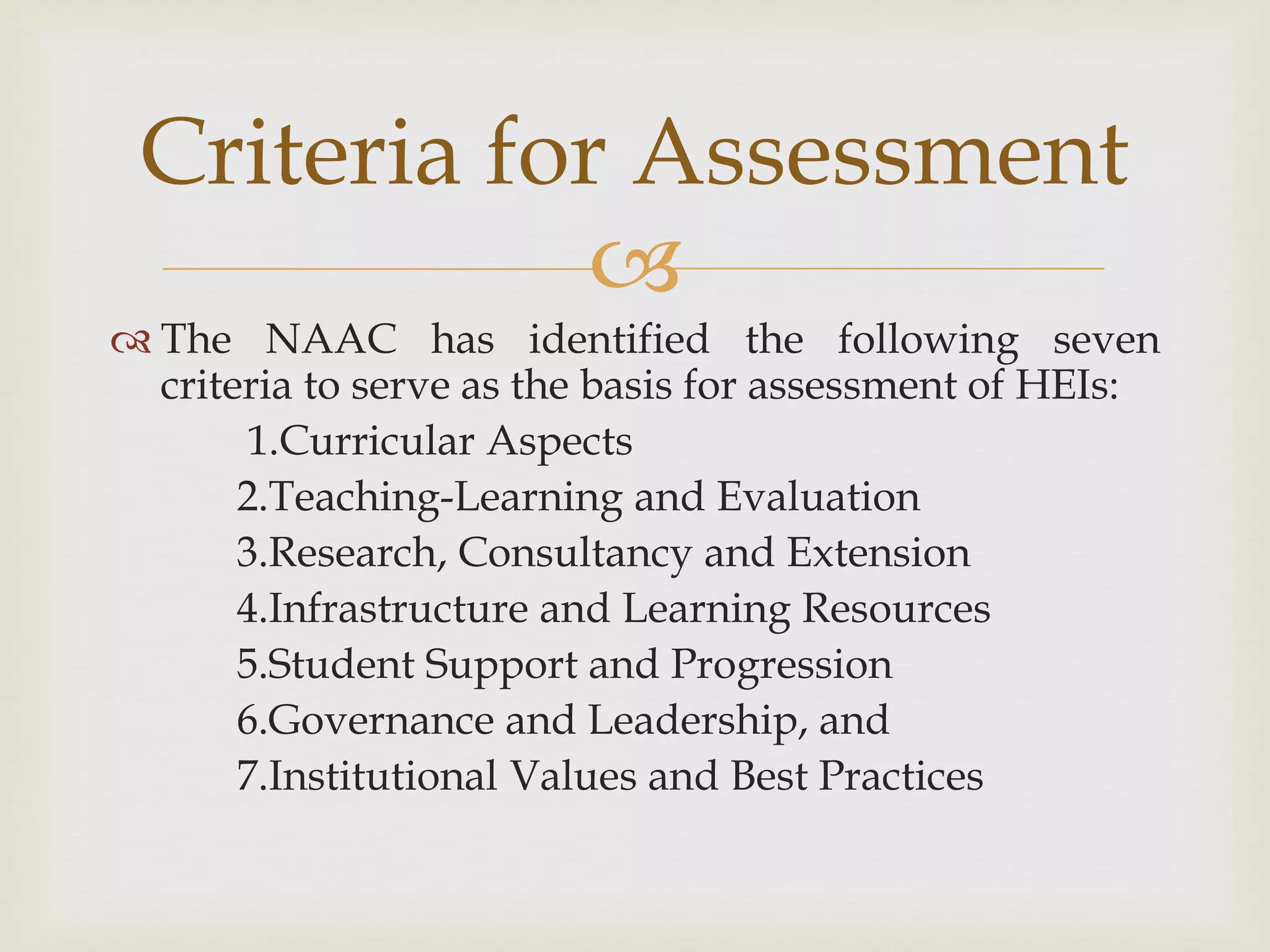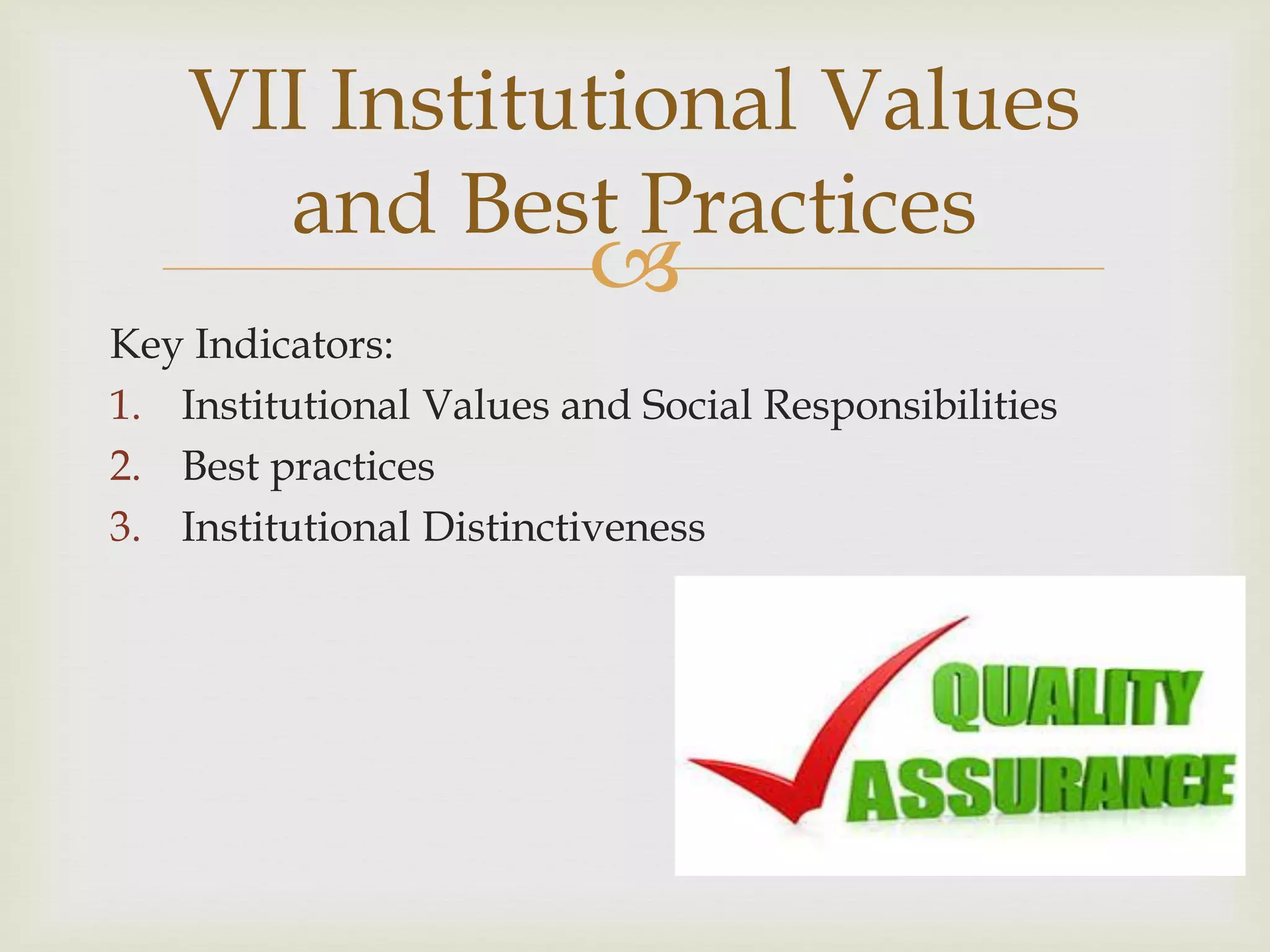The document provides an overview of the National Assessment and Accreditation Council (NAAC) in India. It discusses NAAC's history, vision, mission and core values. The revised assessment and accreditation framework focuses on making the process more objective, transparent and data-driven. Institutions submit a self-study report which undergoes data validation and verification to obtain a pre-qualifier score before an onsite peer review. Seven criteria are used to assess institutions, including teaching-learning, research, infrastructure, and governance. Weightages are assigned across key indicators under each criterion.

